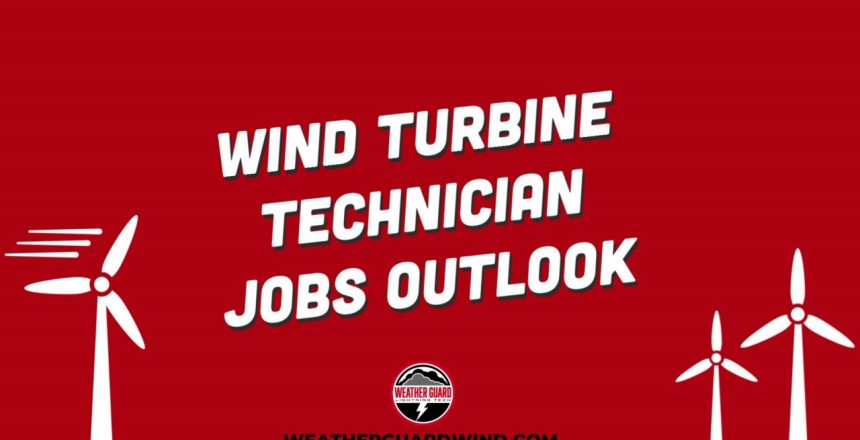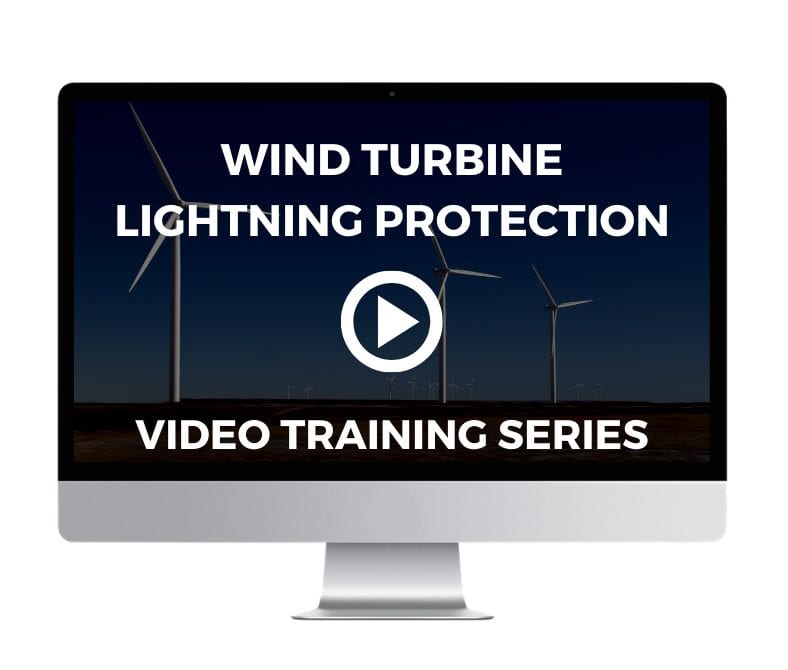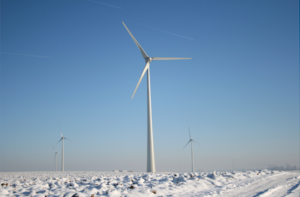What skills are needed to become a wind turbine technician in 2024? What is the job market like, and how might jobs change as the wind energy industry continues to grow? How are new technologies like drones, robotics and AI changing the role of wind technicians? What are the benefits of becoming a wind turbine technician, how dangerous is it, and what are the long-term prospects for advancement?
We update this guide to working as a turbine technician in the wind energy industry regularly in order to provide an overview of the skills and traits that turbine techs need, as well as labor statistics, including salary and job forecasts.
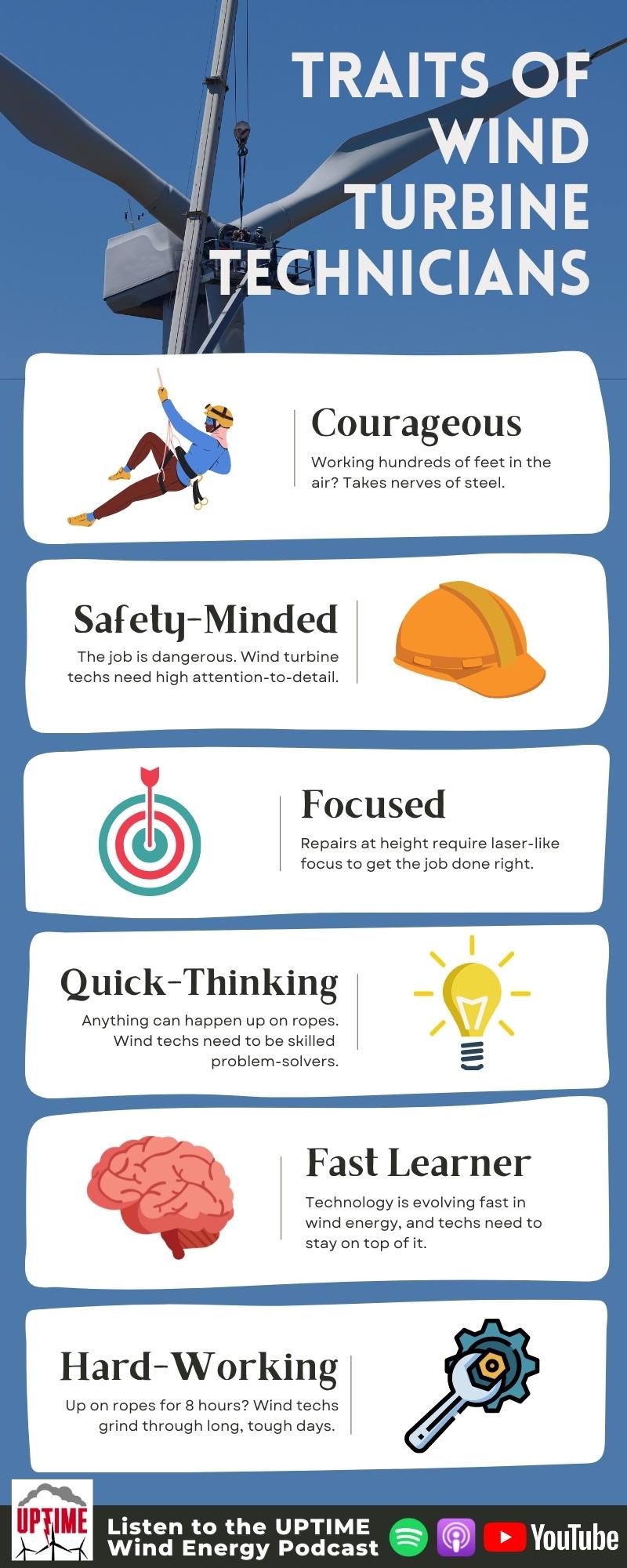
Wind techs remain in demand, both in the US and around the world, and the wind tech job market is expected to continue to grow – but the job is unique, and it can be demanding. If you’re interested in working in the wind industry, doing some research about careers in this industry will help you make the best move.
Bloomberg recently called wind turbine technician the “hottest job in the US.”
WindExchange offers a comprehensive list of wind turbine technician training programs in the US: https://windexchange.energy.gov/training-programs
Here’s one of our podcasts offering insight on wind careers:
Listen to the Interview with Alex Pucacco, author of Where the Wind Takes You: Adventures of a Wind Turbine Engineer
Wind Turbine Technician Jobs FAQ and Quick answers
Let’s start with a few quick questions and answers, then keep reading for a deep dive into the wind tech jobs market.
Is being a wind turbine technician dangerous?
Wind turbines are very large, powerful, electricity-producing machines, and technicians work both in close proximity to electical equipment, often at great heights. For those reasons, there are certain risk in servicing and maintaining wind turbines, turbine blades, and other equipment. However, the wind energy industry has a strong safety record and excellent training programs, and safety equipment and PPE (personal protective equipment) are continuously improved. So while the job includes some significant risks, there are very few fatalities and serious injuries each year. Many people working in the wind industry note that techs are safer each year due to improved safety protocols and advances in safety technology. Gio Scialdone describes the 3S Lift, designed for technician safety.
How do I become a wind turbine tech?
It’s required that wind techs are at least 18 years old, and they must have completed a certificate course at a community college or technical school. Many techs also complete training focused on certain equipment like the hydraulic, electrical, braking or other systems that important aspects of wind turbine power generation and maintenance. Once hired, new wind techs are typically required to complete on-site, on-the-job training, shadowing more experienced wind techs.
Do wind turbine techs need a college degree?
While a college degree is not required to be hired as a wind turbine technician, virtually all employers require a nonsecondary nondegree award, a requirement that is often fulfilled by completing a trade school certificate program.
Do wind turbine technicians travel?
Some windtechs travel extensively, especially those who specialize in certain aspects of wind turbine operation – such as balancing blade loads, or maintaining a specific type of turbine, gearbox, or other equipment. In some situations, wind techs may live near a single site or within an easy drive to several sites, in which case only day travel would typically be required. Some are designated as traveling techs, and they may work on sites all over the world. As in most professions, the extent of travel will depend on the tech’s experience, expertise, and personal preferences. However, it’s important to realize that due to the remote locations of most wind farms, techs typically work in rural, sometimes difficult-to-reach locations.
How much do wind turbine technicians make?
According to the U.S. Bureau of Labor and statistics, the median salary of a wind turbine technician was $57,320 in May of 2022, or $27.55/hr. Salaries for wind techs range from $45,1500 to over $80,170 per year.
Quick Links to Sections in this Article
Get answers fast! The links below will take you to specific sections of this article.
- Wind Turbine Technician Jobs FAQ and Quick answers
- How Much Money Does a Wind Turbine Technician Make?
- How Biden Administration Clean Energy Initiatives & Job Creation programs Are Working
- Does Green Tech Create Jobs, Or Eliminate Them?
- What Kind of Work – and Workers – are Needed to Maintain Wind Turbines?
- Job Skills Needed
- Lifestyle, Travel, and geographic Considerations
- Is Being a Wind Turbine Tech Dangerous?
- Online Wind Technician Job Listings
- More Governmental Resources
- Learn More About Wind Energy Tech
How Much Money Does a Wind Turbine Technician Make?
According to the U.S Bureau of Labor Statistics, the median salary of a wind turbine technician in May of 2022 was $57,320 ($27.56/hr).
The U.S. Bureau of Labor also shared statistics on the lowest and top 10% of earners:
the lowest 10 percent earned less than $45,150, and the highest 10 percent earned more than $80,170.
US Bureau of Labor Statistics
Wind turbine technician job projections were anticipated to climb from 7,000 jobs in 2020 to 11,300 jobs in 2029 – and by 2022, that number was already 11,200. In the 2022 report, wind turbine technician jobs were expected to grow at a rate of 45% (much higher than that average job outlook) from 2022-2032.
Go here to see the BLS report wind tech job projections.
How Biden Administration Clean Energy Initiatives & Job Creation programs Are Working
In 2021, President of the United States, Joe Biden, announced an ambitious initiative to create tens of thousands of jobs in wind energy through the support for new off-shore wind projects. The administration set a target to deploy 30GW of offshore wind power by 2030. The anticipated effect of meeting that target is expected to result in more than $12B per year in capital investment projects in the US, and create thousands of good-paying jobs.
While many of those jobs were anticipated to be union jobs, nearly 33,000 additional jobs are expected to be created in communities supported by offshore wind activity.
Although Orsted completely stopped development of two major offshore projects off the coast of New Jersey in October 2023 – projects that were large pieces of the whole renewable energy puzzle as planned by the Biden administration – many other onshore projects have been announced since the administration’s initial 2030 goal-setting announcement.
– FACT SHEET: Biden Administration Jumpstarts Offshore Wind Energy Projects to Create Jobs
Biden Economics:
The Biden administration still aims to see the US reach 100% clean energy by 2035. The renewable energy industry already employs over 410,000 workers in the U.S.. INote that these figures figure include all renewable energy sources, not just wind power. )
As of August, 2023, the administration’s climate law had already resulted in 86,000 new jobs and $132 billion in investment. More investments, and more jobs, are expected. A third-quarter report on clean energy job investments, including a $10M increase in training programs, was summarized here, with another $40M investment announced in November of 2023.
Does Green Tech Create Jobs, Or Eliminate Them?
According to Cleanpower.org, wind power employs 120,000 Americans in a variety of jobs (not just turbine techs) and also employs Veterans at a rate 80% higher than the national average. A net increase in new jobs can be reasonably expected in the green tech sector, as new projects and technologies are announced almost monthly. Examples of such projects in the US wind industry include blade recycling and blade manufacturing plants.
According to the International Renewable Energy Agency (IRENA), jobs in the renewables sector more than doubled in the past decade, reaching 13.7 million jobs by the end of 2022.
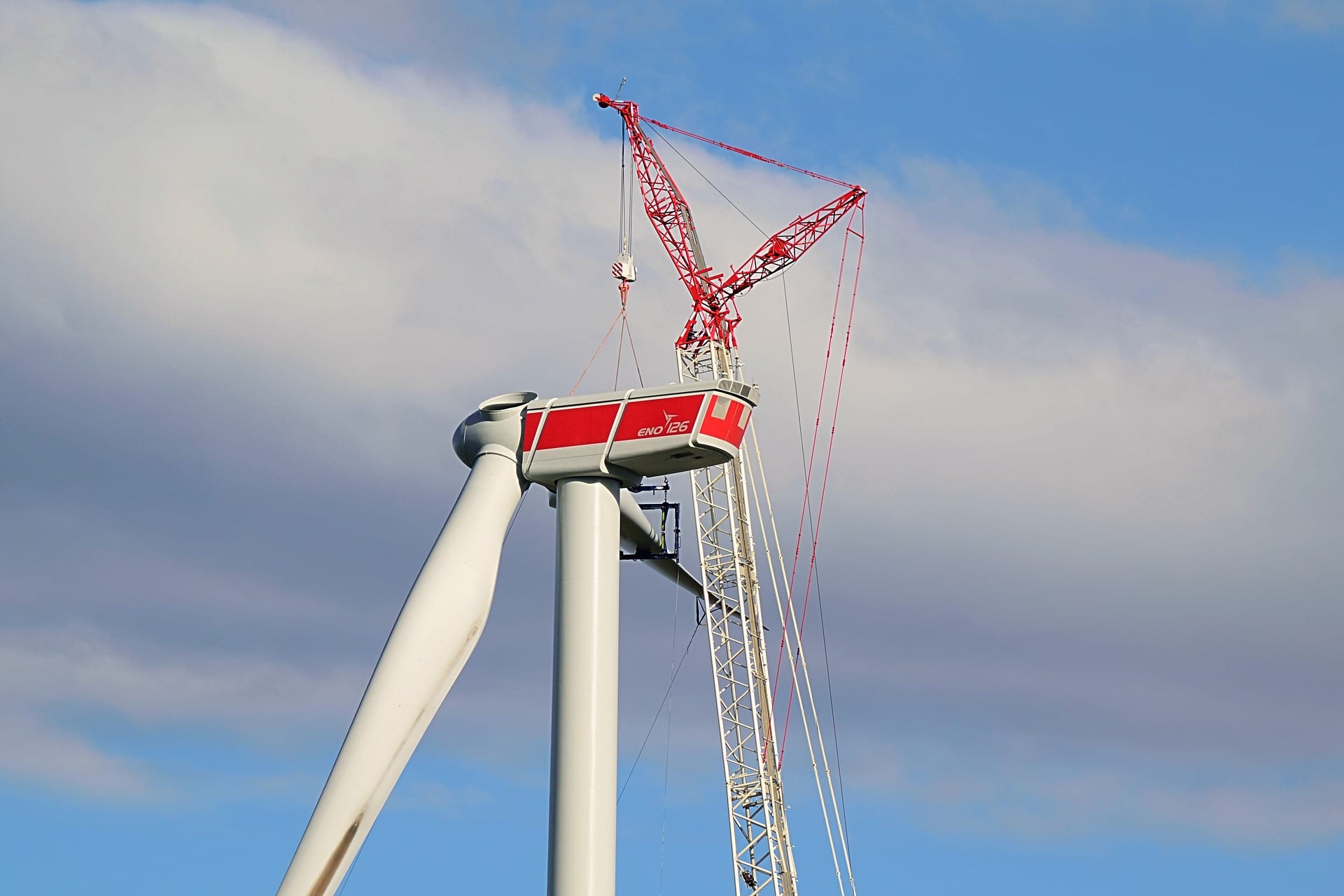
An interesting fact about renewable energy sources and electric vehicles is that both the plants and vehicles tend to be simpler to operate and maintain. (Even electric bicycles appear to be making a dent in reducing emissions, according to several studies conducted in 2022 and 2023, in Spain and the US as well as in UK.)
Solar electricity plants require fewer workers to operate and maintain compared to a coal or gas plant, according this Forbes article. So while many new construction jobs are required to build renewable power plants, once the construction is completed, many of the initially-created jobs (in construction) are no longer needed. How those jobs are offset by other, permanent jobs, only time will tell – however, considering the job market for wind turbine technicians alone, it’s clear that addition of those jobs will make up for many of the construction jobs.
Also, as existing wind farms begin to show their age, additional maintenance and repowering projects will follow, creating additional need for people in the wind industry, as well as workers knowledgeable in manufacturing and other trades, as maintaining and repairing the green power plant equipment will be an ongoing need.
Repowering the Wind Workforce: Rangel Renewables
What Kind of Work – and Workers – are Needed to Maintain Wind Turbines?
Due to the global increase in wind farms, wind turbine technicians are in demand worldwide. And even in the US, where wind farms on average are typically newer than most of those around the world, wind turbine maintenance continues to be a growing field.
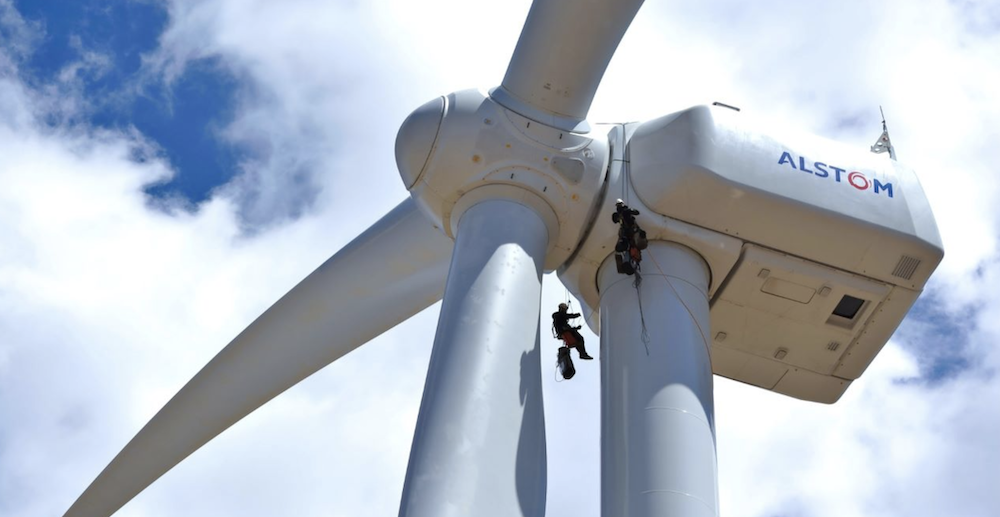
What types of ongoing maintenance and repairs do wind turbines require?
- Regular inspections and monitoring of the electrical systems, nacelle and turbine blades
- Blade inspections require operators using robots or drones, as well as rope access technicians in some cases
- Nacelle and interior electrical components require skilled technicians as well
- Repairs & Retrofit upgrades
- Inspect, assess and repair damage due to lightning strikes, leading edge erosion, general wear and tear
- Install power curve upgrades, sensors and other retrofit equipment to restore or improve power output performance
These jobs range in technical skill and the safety certifications required, as wind turbines are powerful machines. Though the wind industry has a strong safety record, it can be dangerous work; the electricity generated can kill, as can working at height or up on ropes, in the case of rope access technicians.
It’s a testament to the thoroughness of safety training, equipment, and on-the-job safety checks that despite the job’s inherent risks, wind turbine technicians work with a high degree of safety.
Job Skills Needed
Not everyone is cut out for a career as a wind turbine technician. Though salaries are attractive and the idea of working outdoors can be quite inviting, wind techs must meet the basic physical requirements and have other skills to manage the work.
Like many jobs, the role of wind turbine techs is evolving steadily to keep up with new technology, including advanced monitoring systems. Diagnostic tools like drones and robots are widely used to perform many tasks at height that previously required a human to perform. However, technicians are needed to interpret data the drones deliver, and humans are still needed to visually inspect many elements of wind turbines.
As technology advances, the job is expected to become even safer and less physically demanding, however, in order to maintain their expertise in the field, wind techs will need to constantly stay up-to-date with the latest equipment and diagnostic tools.
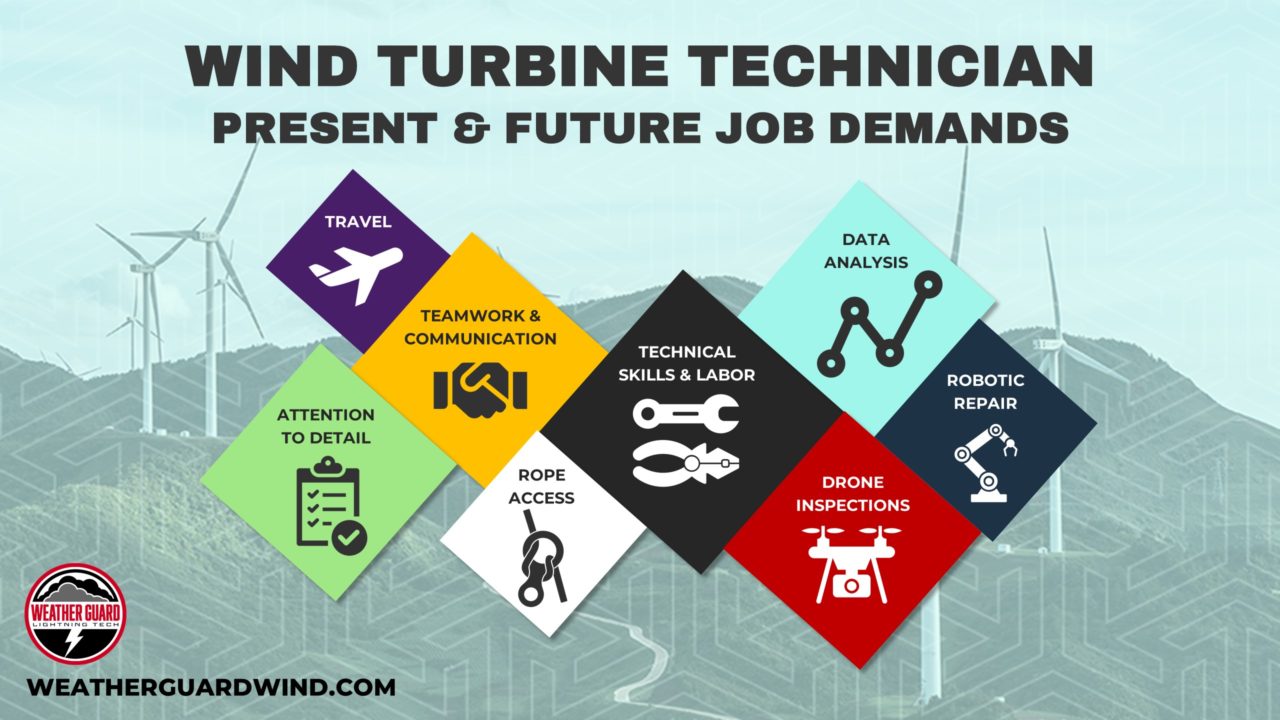
Wind Technician Job skills include:
- Physical capability to lift heavy items, crawl, work at height or in confined spaces
- Good communication and interpersonal skills
- Rope access may be required, a skill that demands specific training
- Ability to gather and interpret data
- When drone and robots perform repairs, technicians are required to learn to control and pilot them
- Willingness and ability to work outdoors, in remote areas, potentially off-shore, as well as in confined spaces
- Open-minded attitude and aptitude for learning new skills as the job evolves
Check out this video below for a glimpse into one of the training courses that wind techs will go through:
Lifestyle, Travel, and geographic Considerations
Working as a wind turbine technician will usually require working in – and possibly living in – fairly remote locations. Wind turbines are almost always installed in rural or remote areas where land is cheaper and plentiful, wind speeds are higher and the topography is favorable. For those who want a big-city life, being a wind tech may not be a great fit, as most sites are far out from the big city lights.
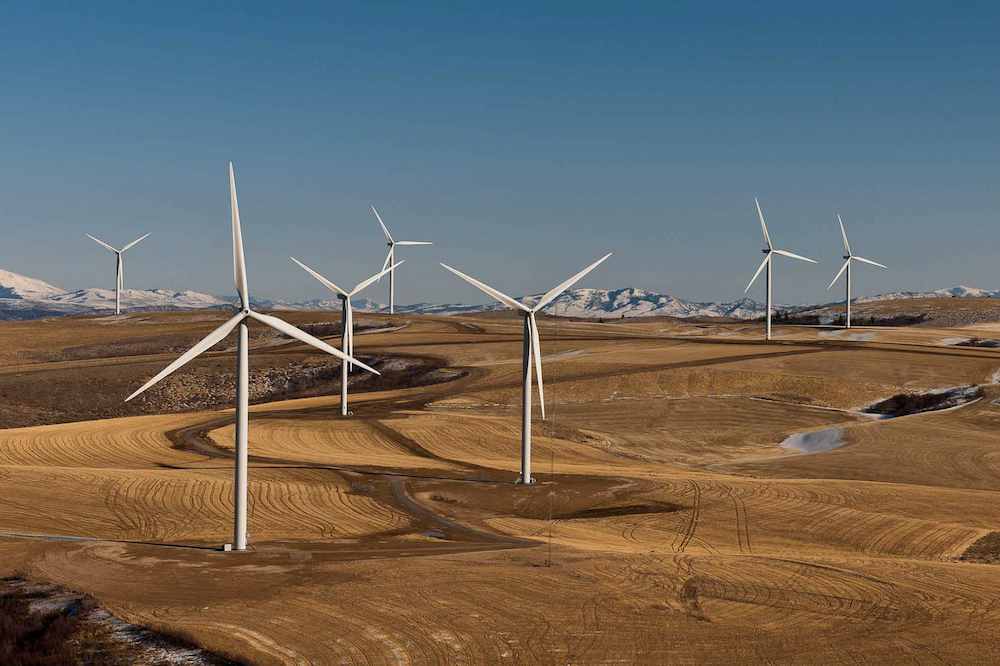
Many wind turbine techs travel all over as contract workers on different sites, which can be a terrific fit for those wanting to travel and see the world.
For those who have a strong sense of adventure, enjoy being out in nature and would find happiness living and working in smaller, more rural locations, it can be a great fit.
Wind Tech Jobs Are Going Off-Shore, Too
It’s also important to note that wind power is not just land based. As off-shore wind power is increasing at a very rapid rate, wind technicians also need to consider their willingness to work in a marine environment, as some of the world’s biggest wind turbines are now built in off-shore wind farms.
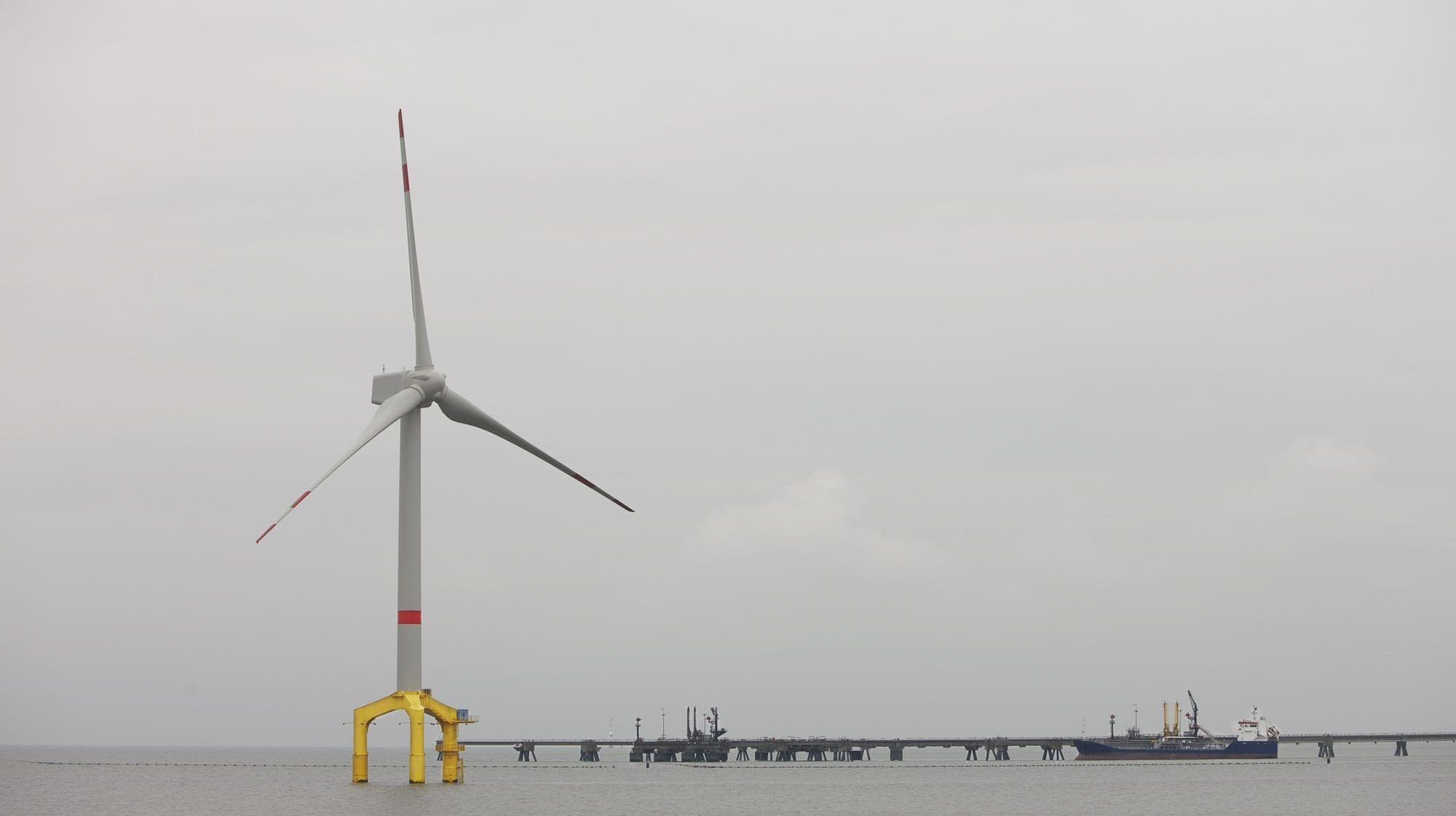
Is Being a Wind Turbine Tech Dangerous?
In 2019, the Global Wind Organization (GWO) more than doubled the safety training requirements for techs in North America. Before embarking on a new career path, be sure to do as much research as you can.
This white paper on wind turbine safety by the American Society of Safety Professionals explaining the vast list of OSHA requirements for wind professionals, including the training required for wind technicians to do their job properly, is a good place to start. This Q&A with a Tech Safety Lines specialist is also worth reading.
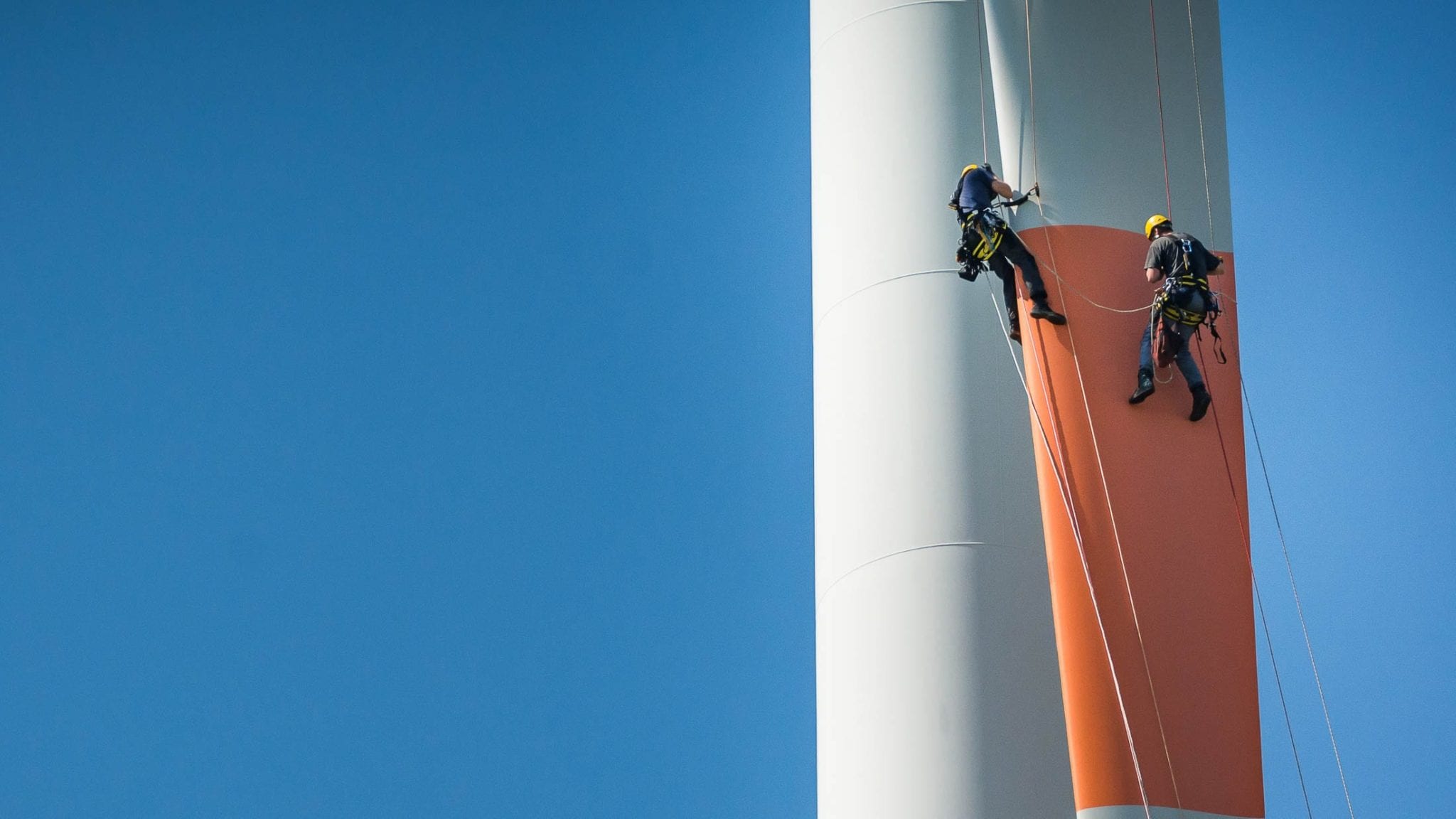
In the UK, safety data reveals only one fatal accident in 2021. In the U.S., statistics are difficult to come by, but the track record of safety appears strong.
It’s important to know the risks–four of which are outlined below–while also understanding that proper safety training makes working in the wind industry quite safe.
Four Main Safety Hazards of Wind Turbine Jobs
OSHA provides significant guidelines on all aspects of safety. Four of the biggest safety risks for wind technicians include accidents and bodily injuries from:
- Slip and fall
- Rope access and tower climbs involve risk of falls from heights that can kill
- Electrocution
- Electric shock protection is paramount, as wind turbines generate significant electricity
- “Struck by”
- Risk of being struck by moving or falling objects
- Caught in/between
- Risk of being caught in or between machinery or heavy objects
The encouraging news is that, although safety data shows that incidences of human bodily injuries and deaths are very low, and proper safety training is stressed throughout the industry, advances in technology and PPE continue to make working as a wind farm technician safer than ever.
Automation, Drones and Robots Improve Worker Safety
It is truly difficult to keep up with all of the technology advances in the wind industry y- even “just” those advances that improve worker safety. Numerous drones and robotic devices now routinely perform inspections and tasks that required humans to do just 5 or 10 years ago. We are constantly seeing advances in robotics, as well as artificial intelligence, infrared photography, and other technologies, and these advances are quickly put to work in the field.
On the one hand, that is great news for technicians, as it makes their jobs safer. It also affords both technicians and owners and operators better data to use in doing their jobs. It does, however, add an emphasis on continual learning for wind techs (and everyone in the industry).
For more on what a wind turbine rope access technician does on a daily basis, check out the video below:
Online Wind Technician Job Listings
If you’re ready to apply for a wind energy job, including one as a wind turbine technician, consider some of the career sites below. (Note that Weather Guard Lightning Tech is not affiliated in any way with any of these sites.)
Below you’ll find links to wind technician jobs postings for some of the most popular recruiting websites. In addition to these, you can go directly to wind services organizations to find out what specific companies are looking for.
- Zip Recruiter listings for wind technicians
- Glassdoor.com listings for wind tech jobs
- Careerjet listings for wind technician jobs
- Linkedin job listings for wind energy jobs
- Indeed.com wind power jobs
- Careerbuilder.com jobs in the wind energy sector
- Monster.com job listings for wind turbine technicians
- Careerstructure.com wind turbine technician job listings
- Euroenergyjobs.com wind technician job postings
More Governmental Resources
Learn More About Wind Energy Tech
If you want to increase your knowledge and become a stronger candidate for a job in the wind industry, be sure to check out the Uptime Wind Energy Podcast.
Watch our episode on wind tech jobs here:
We interview CEOs and business professionals who are making waves in the industry with new technology, solutions and ideas to improve wind power. It’s available on YouTube and all your favorite podcast platforms; listen now!
Since this jobs outlook for wind turbine technicians was originally posted, we have updated it regularly. The most recent major update was December 15, 2023, which included the latest salary data available, updated wind tech training programs, a 2023 interview with an engineer and wind technician, news and information regarding government funding and programs in the wind energy industry, safety programs, and more. If you are interested in working as a wind turbine technician, or in learning about other opportunities in the wind industry, follow the Uptime Wind Energy Podcast.

